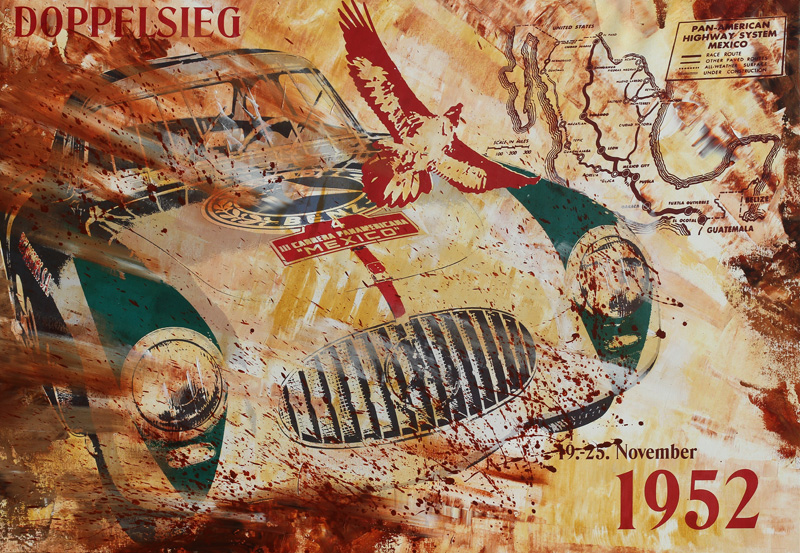MixedMedia / Acrylic on Canvas
on 1.8” / 45 mm Wooden Museum Frame
63” x 43” / 160 x 110 cm
The Carrera Panamericana was a motor racing event held over several days in stages on open roads in Mexico between 1950 and 1954. Although only 5 events were held, the “Carrera” became one of the most popular road races of all time. It was considered one of the most difficult endurance races, covering a distance of over 2000 miles (3200 km). The race was finally cancelled due to excessive numbers of fatal accidents.
1952: As the race was run at an altitude of more than 2000 m, even rising to 3196 m in the Puerto Aires pass, Mercedes conducted altitude test in advance with the Mercedes-Benz 300 SL on the Grossglockner in Austria.
Three 300 SL then participated in the race in November. The famous vulture accident occurred during the first stage, with a vulture slamming at over 200 km/h into the windscreen of Karl Kling’s car. Co-driver Hans Klenk was injured and knocked unconscious. Vertical metal bars, the legendary vulture catchers, were fitted overnight by Mercedes technicians. After 8 stages and 18 hours, 51 minutes, Kling and Klenk crossed the finish line in first place, just 35 minutes before their team colleagues Hermann Lang and Erwin Grupp in second position in their SL.
Porsche gained victories in the smaller classes in this race and later named the Carrera models (mainly the most powerful vehicles) in honour of these successes. The Panamera and the Panamericana design study also borrowed their names from this race.












